Share Post:
If you want to tackle the B Major chord on guitar, brace yourself. This chord is notorious for being a finger-busting challenge, especially for beginners.
But don’t fret, I’ve got ten techniques to help you nail this beast. By the end, you’ll be strumming B Major like a pro.
1. B Major Chord Structure

Let’s start with the basics. The B Major chord is a triad, meaning it’s made up of three notes: B, D#, and F#. Sounds simple, right?
Knowing these notes is crucial for playing the chord in various positions across the fretboard. Trust me, understanding the anatomy of this chord will make a world of difference.
2. Barre Chord Method
Ah, the barre chord method – the bane of every beginner’s existence. Here’s the deal:
- Place your index finger across all strings at the 2nd fret.
- Position your ring finger on the 4th fret of the D (4th) string.
- Place your pinky on the 4th fret of the G (3rd) string.
- Put your middle finger on the 3rd fret of the B (2nd) string.
- Strum from the A (5th) string down to the high E (1st) string.
Voilà, you’ve got your B Major. It can be tough at the begging, and you might feel a hand cramp here and there, but it’s progress. Celebrate it!
3. Power Chord Variation

If the barre chord method feels like medieval torture, try the power chord variation. It’s easier and still packs a punch.
- Place your index finger on the 2nd fret of the A (5th) string.
- Put your ring finger on the 4th fret of the D (4th) string.
- Place your pinky on the 4th fret of the G (3rd) string.
- Strum only the A, D, and G strings.
No barre required, no problem.
4. Triad Version
Here’s another simplified option – the triad version. It’s similar to the power chord but even more minimalist.
- Place your index finger on the 2nd fret of the high E (1st) string.
- Position your middle finger on the 3rd fret of the B (2nd) string.
- Place your ring finger on the 4th fret of the G (3rd) string.
- Strum only the G, B, and high E strings.
Less finger strain, more music.
5. Open B Major Chord
For the rebels who hate barre chords, there’s the open B Major chord. It’s a bit unconventional, but worth a shot.
- Place your index finger on the 2nd fret of the A (5th) string.
- Position your middle finger on the 4th fret of the D (4th) string.
- Place your ring finger on the 4th fret of the G (3rd) string.
- Play the B (2nd) and high E (1st) strings open.
- Strum all strings except the low E (6th) string.
If you’re feeling fancy, give it a go.
6. Practicing B Major with Chord Transitions
So you’ve got your B Major. Now what? Practice chord transitions to make your playing smoother. Try these progressions:
- E – B – C#m – A
- G#m – B – F# – E
Here are some tips:
- Start slow and focus on clarity.
- Use a metronome to gradually increase speed.
- Practice lifting and placing your fingers simultaneously for quicker transitions.
Transitioning like a boss, that’s the goal.
7. Finger Strength and Flexibility Exercises

Let’s be real – B Major is a workout. Boost your finger strength and flexibility with these exercises:
- Spider Exercise: Move fingers independently across strings and frets.
- Finger Stretching: Stretch fingers across frets without playing any notes.
- Strength Building: Press down on each string with individual fingers to build strength.
Strong fingers, happy guitar.
8. Using a Capo for Easier B Major
Enter the capo, your new best friend. Place it on the 2nd fret and play an A Major shape. Voilà, instant B Major without the fuss.
9. Alternate Tunings

Feeling adventurous? Experiment with alternate tunings. Drop D tuning (tuning the low E string down to D) makes B Major simpler.
- Tune the low E string down to D.
- Play a B Major chord shape – the different string tension does the rest.
New tuning, new possibilities.
10. Playing B Major in Different Positions
Variety is the spice of life, right? Learn to play B Major in different positions on the fretboard.
Examples of Different Positions
- 7th Fret Barre Chord: Similar shape as the 2nd fret but moved up.
- Root on E String: Play the barre chord with the root on the E string at the 7th fret.
- CAGED System: Use the C, A, G, E, D chord shapes across the fretboard to find B Major.
Versatility is key to spicing up your playing.
Tips for Acoustic vs. Electric Guitar

Playing B Major varies between acoustic and electric guitars.
Tips for Acoustic Guitar
- Use lighter gauge strings for easier fretting.
- Focus on barre chord techniques.
Tips for Electric Guitar
- Experiment with different chord voicings and effects.
- Utilize the lower action of electric guitars for smoother playing.
Different guitars, different approaches.
Overcoming Common Challenges
Everyone struggles with B Major. Here are some common issues and solutions:
Common Issues
- Buzzing Strings: Ensure all fingers press down firmly.
- Muffled Sound: Check finger placement and avoid touching adjacent strings.
- Hand Fatigue: Take breaks and build up playing time gradually.
Solutions
- Practice slowly and methodically.
- Use finger exercises to build strength.
- Seek feedback from a teacher or use video recordings to analyze your technique.
Best Songs to Practice Playing B Major
- “November Rain” – Guns N’ Roses
- “How to Love” – Lil Wayne
- “Heart-Shaped Box” – Nirvana
- “The Lazy Song” – Bruno Mars
- “American Woman” – The Guess Who
- “Little Red Wagon” – Miranda Lambert
- “Dream Police” – Cheap Trick
- “Let It Be” – The Beatles
- “I Want It That Way” – Backstreet Boys
- “Ironic” – Alanis Morissette
- “Lightning Crashes” – Live
- “Wicked Game” – Chris Isaak
- “Creep” – Radiohead
- “This is How We Do It” – Montell Jordan
- “3 O’Clock Blues” – BB King and Eric Clapton
- “Rebirah” – Acoustic Songs Tuned Half Step
- “Wonderwall” – Oasis
- “Ring of Fire” – Johnny Cash
- “Learning to Fly” – Tom Petty
- “Dream Police” – Cheap Trick
The Bottom Line
Persistence pays off. Keep at it, and soon the B Major chord will be just another weapon in your musical arsenal.











